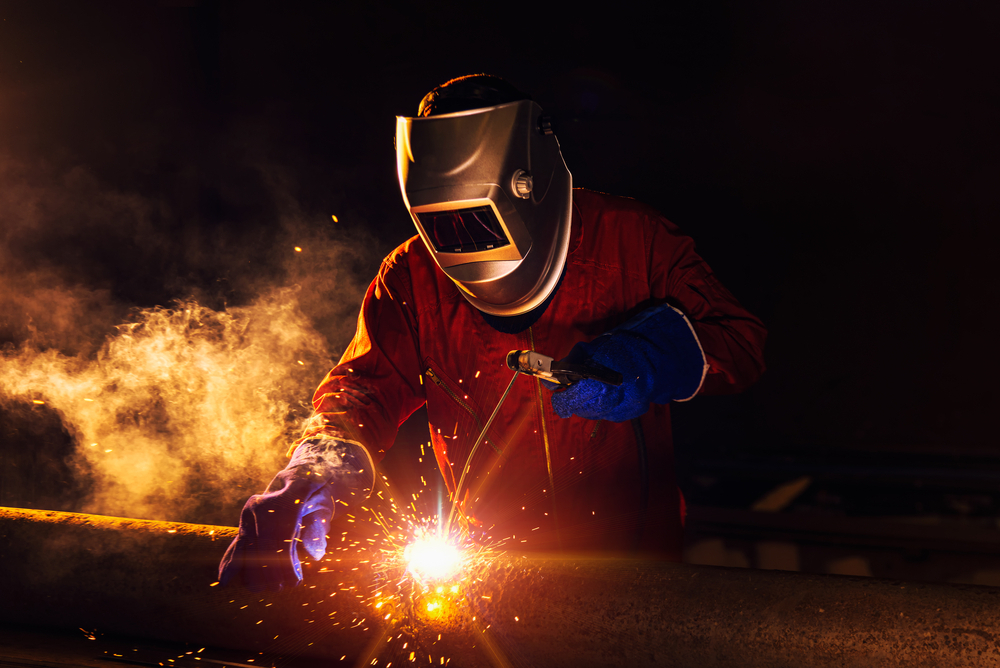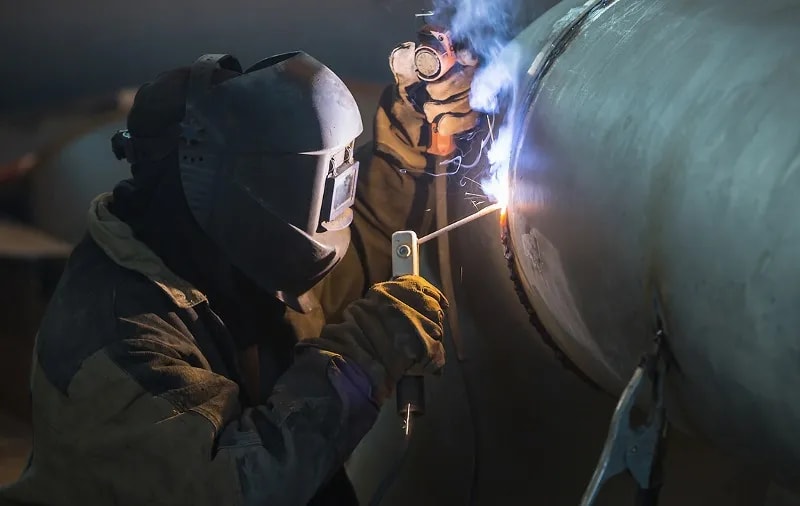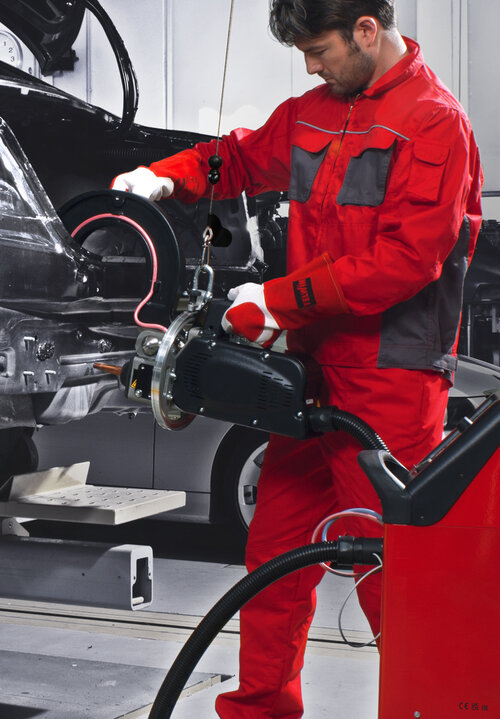Common Welding Fixing Issues and How to Address Them Successfully
Welding fixings frequently encounter a variety of issues that can jeopardize the integrity of the final item. Common problems include insufficient infiltration, porosity, and imbalance, to name a few. Each flaw offers one-of-a-kind obstacles that call for certain approaches for resolution. Recognizing these issues is necessary for welders intending to boost their outcomes and abilities. This conversation will explore these usual welding repair concerns and efficient techniques to address them.
Inadequate Penetration
Inadequate penetration takes place when the weld steel stops working to completely fuse with the base material, leading to weak joints and possible structural failures. This problem usually stems from not enough warmth input, incorrect electrode angle, or incorrect welding rate. Welders might experience poor penetration because of a miscalculation of the necessary parameters for a specific material thickness or kind. Additionally, contamination on the base product's surface can hinder effective bonding, intensifying the issue. To address insufficient infiltration, welders ought to guarantee appropriate setups on their equipment and preserve a tidy job surface area. Regular inspection of welds is advised to recognize any deficiencies early, enabling timely corrections and the prevention of compromised structural integrity in bonded settings up.
Porosity
Porosity is a common flaw in welded joints that materializes as small gas bubbles entraped within the weld metal. This issue can endanger the integrity of the weld, causing reduced strength and possible failure under anxiety. Belgrade Welding. Porosity commonly occurs from contamination, wetness, or incorrect welding techniques, which enable gases to get away into the liquified weld swimming pool. To resolve porosity, welders ought to guarantee appropriate surface prep work, maintain a clean working environment, and utilize ideal welding criteria. In addition, picking the right filler product and shielding gas can mitigate gas entrapment. Normal examination and testing of welds can assist determine porosity early, guaranteeing timely restorative actions are taken, therefore protecting the top quality and dependability of the bonded framework
Imbalance
Imbalance in welding can arise from different aspects, consisting of incorrect setup and thermal expansion. Recognizing the origin is important for efficient resolution. Several improvement techniques are offered to realign parts and guarantee structural stability.
Root causes of Imbalance
Welding imbalance frequently stems from a variety of underlying issues that can compromise architectural stability. One primary cause is inappropriate fit-up of parts before welding, which can result in gaps and uneven surface areas. Variants in thermal growth throughout the welding procedure can additionally cause distortion, specifically if the products being joined have various coefficients of development. Additionally, inadequate clamping and fixturing may fall short to hold components firmly in position, causing movement throughout welding. Improperly conserved equipment, consisting of welding machines and devices, might introduce incongruities in the weld bead, additional contributing to misalignment. Operator mistake, stemming from insufficient training or experience, can additionally play a substantial duty in developing misaligned welds.

Correction Techniques Offered
Resolving imbalance effectively requires a combination of rehabilitative techniques tailored to the details issues available. One usual method is the usage of components or jigs to hold parts in the correct position during welding, making sure regular positioning. In addition, pre-heating the products can help lower distortion and enhance fit-up. For significant misalignment, mechanical realignment strategies, such as using hydraulic jacks or clamps, can be employed to correct the setting prior to welding. Post-weld warm therapy may also be essential to alleviate stress and anxieties triggered by imbalance. Cautious assessment and adjustment during the setup phase can prevent imbalance issues from ending up being substantial issues, promoting a smoother welding process and enhancing total architectural honesty.
Distortion
Distortion is a common difficulty in welding that can emerge from different variables, including unequal heating and cooling. Comprehending the root causes of distortion is vital for carrying out efficient avoidance techniques. Resolving this problem not only enhances architectural honesty yet likewise enhances the overall high quality of the weld.
Sources of Distortion
When based on the extreme heat of welding, products often undergo modifications that can cause distortion. This sensation mostly occurs from thermal development and tightening during the welding process. As the weld area warms up, the product expands; upon air conditioning, it contracts, which can develop internal anxieties. Additionally, irregular heating throughout a workpiece can aggravate these anxieties, causing warping or bending. The kind of product also plays a significant duty; steels with varying thermal conductivity and coefficients of growth might respond in different ways, leading to unpredictable distortions. Bad joint style and inadequate fixturing can contribute to misalignment throughout welding, enhancing the probability of distortion. Understanding these causes is necessary for efficient welding fixing and prevention strategies.
Avoidance Techniques
Reliable avoidance techniques for distortion during welding focus on managing warmth input and making sure correct joint design. Preserving a consistent heat input aids to lessen thermal development and tightening, which can result in distortion. Utilizing methods such as preheating the work surface can additionally minimize the temperature level slope, promoting uniform heating. In addition, picking proper joint designs, such as T-joints or lap joints, can boost stability and decrease anxiety focus. Implementing correct fixturing to safeguard the workpieces in area additionally aids in keeping positioning during the welding procedure. Staggered welding series can disperse heat a lot more uniformly, stopping local distortion. By applying these approaches, welders can greatly lower the possibility of distortion and boost the total high quality of their welds.
Breaking
Breaking is a common problem experienced in welding repair work, frequently arising from different variables such as incorrect cooling prices, material selection, or inadequate joint prep work. The occurrence of fractures can significantly compromise the honesty of the weld, bring about possible failings throughout procedure. To address this concern, welders must first evaluate the root triggers, ensuring that products work and appropriately picked for the particular application. Additionally, controlling the air conditioning price throughout the welding process is vital; fast cooling can cause tension and bring about splitting. Appropriate joint style and prep work also add to minimizing the risk. Carrying out these approaches can improve weld top quality and sturdiness, inevitably reducing the probability of breaking in completed weldments.

Incomplete Combination
A considerable concern in welding repair services is insufficient combination, which happens when the weld metal does not effectively bond with the base product or previous weld passes - Montana Mobile Welding and Repair Belgrade. This flaw can result in weak points in the joint, potentially endangering the honesty of the bonded structure. Variables contributing to incomplete combination include not enough warm input, incorrect welding technique, and contamination of the surface areas being joined. To address this problem effectively, welders should guarantee proper pre-weld cleaning and surface area preparation, next as well as change their welding specifications to achieve sufficient infiltration and combination. Normal assessment during the welding process can additionally aid identify insufficient combination early, enabling for prompt rehabilitative actions to improve the overall high quality of the weld
Overheating
While welding repair services can boost architectural integrity, overheating presents a considerable difficulty that can result in product degradation. Extreme warm during welding can alter the mechanical properties of metals, resulting in lowered strength, increased brittleness, and warping. This sensation is especially important in high-stress applications where architectural integrity is critical. Identifying getting too hot can entail aesthetic examinations for staining or distortion, in addition to checking temperature level throughout the welding process. To minimize the risks connected with overheating, welders should employ appropriate methods, such as controlling heat input, readjusting travel rate, and utilizing ideal filler materials. Additionally, carrying out pre- and post-weld warm treatments can aid bring back material buildings and improve the general top quality of the fixing, making sure long-lasting performance and safety and security.
Often Asked Inquiries
What Are the Usual Indicators of a Welding Issue?

Exactly How Can I Examine My Welds for Quality?
To examine welds for top quality, one can utilize visual evaluations, ultrasonic testing, and radiographic approaches. Each method ensures architectural integrity, recognizes defects, and validates adherence to defined criteria, inevitably boosting the dependability of the welded joints.
What Safety Safety Measures Should I Take While Welding?
When welding, one should focus on safety by wearing proper personal protective tools, ensuring proper air flow, securing flammable materials away, keeping a clean workspace, and knowing environments to stop injuries and mishaps.
Can I Fix a Weld Without Remodeling the Entire Joint?
Fixing a weld without redoing the entire joint is feasible, depending on the damage (Montana Mobile Welding and Repair). Strategies such as grinding, including filler product, or making use of a welding procedure can properly resolve certain flaws while protecting the surrounding structure
What Equipment Are Crucial for Reliable Welding Repairs?
Crucial devices for reliable welding repairs include a welding device, cable brush, mill, protective equipment, clamps, and filler materials. Each tool plays a crucial function in ensuring quality and safety during the repair service process. Porosity usually occurs from contamination, dampness, or improper welding methods, which permit pop over to this site gases to escape like it into the molten weld pool. Poorly conserved equipment, consisting of welding devices and devices, might present variances in the weld bead, more adding to misalignment. When subjected to the extreme warm of welding, materials usually undergo adjustments that can lead to distortion. Breaking is an usual concern encountered in welding repairs, often resulting from various elements such as incorrect cooling prices, material option, or inadequate joint preparation. A substantial concern in welding repairs is incomplete fusion, which takes place when the weld metal does not effectively bond with the base product or previous weld passes.